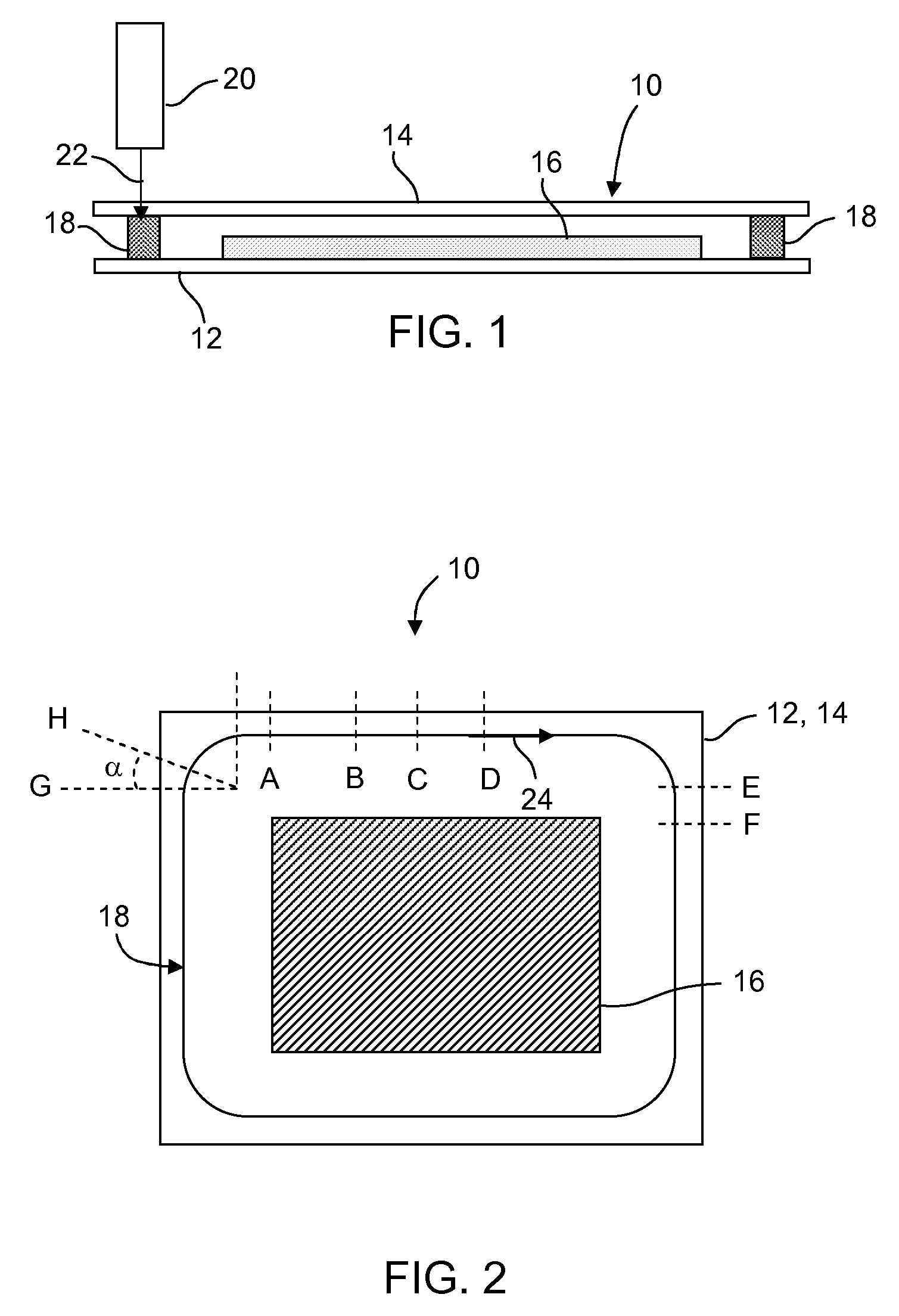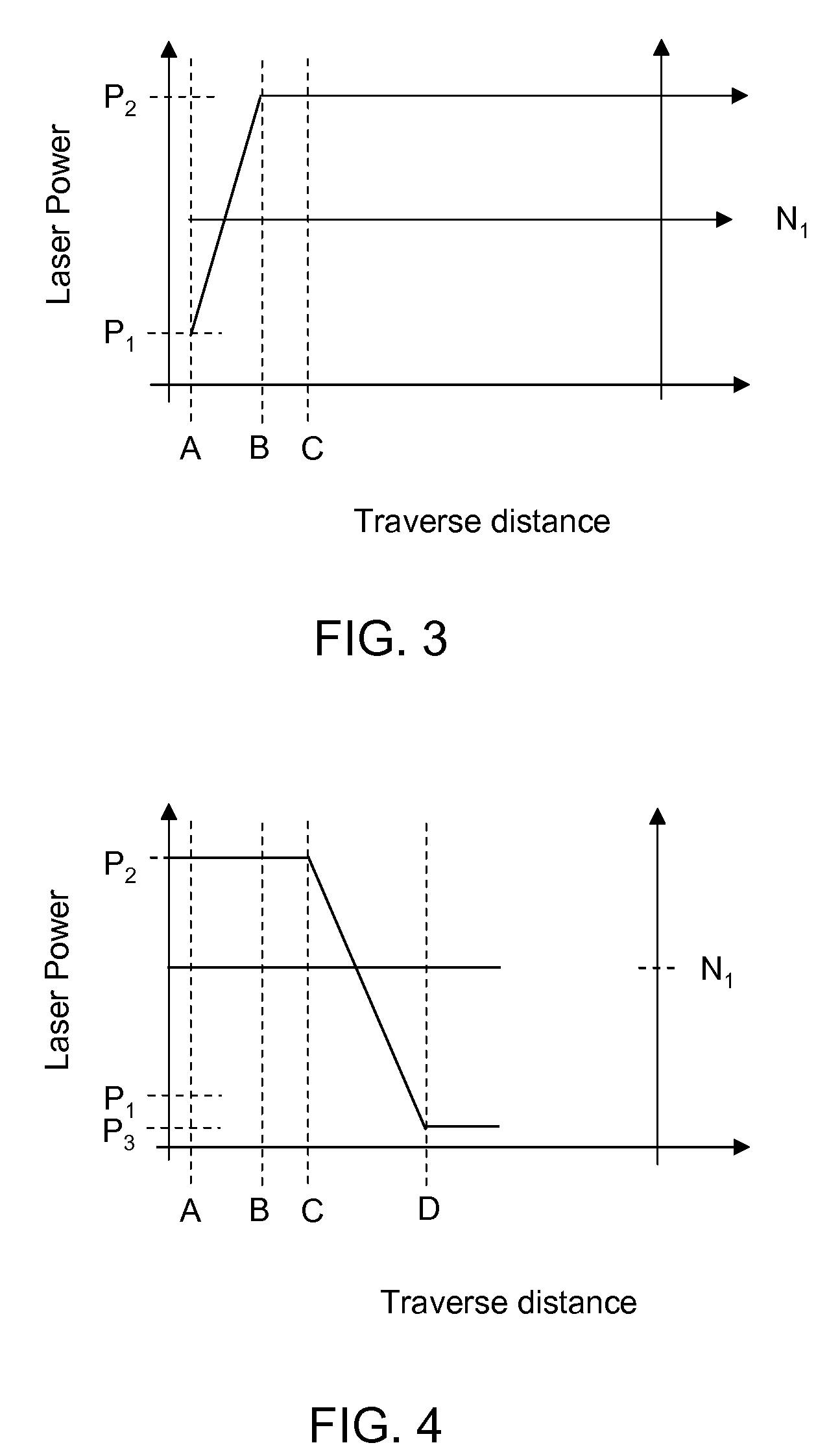Method of sealing a glass envelope
a glass envelope and sealing technology, applied in the manufacture of cold cathode, electric discharge tube/lamp, electric discharge system, etc., can solve the problems of dimensional changes in the substrates that can be detrimental to the assembly process, and the challenge of sealing low cte frits to high cte substrates, etc., to achieve the effect of softening the frit and quickly forming an initial stabilizing connection
- Summary
- Abstract
- Description
- Claims
- Application Information
AI Technical Summary
Benefits of technology
Problems solved by technology
Method used
Image
Examples
examples
[0078]In one experiment, a glass assembly comprising first and second substrates and a glass frit were sealed with a laser in accordance with an embodiment of the invention. The glass substrates were identical sheets of borosilicate glass having an thickness of approximately 0.7 mm and a CTE of about 89×10−7 / ° C. The frit was disposed between the substrates in a rectangular pattern with corners of the pattern possessing an approximately 1 mm radius of curvature. The frit comprised a vanadium-phosphate glass and a B-eucryptite filler material, and had a CTE of about 35×10−7 / ° C. A diode laser operating at 810 nm was used to successfully perform the sealing. The laser operated at a constant speed of about 2 mm / s. The laser produced a Gaussian beam having a 1 / e2 width of 1.8 mm. Referring to FIGS. 2, 3 and 4 the laser began traversing the frit at a first power P1 of 0.5 watts and increased to a maximum power P2 of 9.5 watts at point B. The power increase, or ramp, was performed at a ra...
PUM
| Property | Measurement | Unit |
|---|---|---|
| Temperature | aaaaa | aaaaa |
| Temperature | aaaaa | aaaaa |
| Length | aaaaa | aaaaa |
Abstract
Description
Claims
Application Information
 Login to View More
Login to View More - Generate Ideas
- Intellectual Property
- Life Sciences
- Materials
- Tech Scout
- Unparalleled Data Quality
- Higher Quality Content
- 60% Fewer Hallucinations
Browse by: Latest US Patents, China's latest patents, Technical Efficacy Thesaurus, Application Domain, Technology Topic, Popular Technical Reports.
© 2025 PatSnap. All rights reserved.Legal|Privacy policy|Modern Slavery Act Transparency Statement|Sitemap|About US| Contact US: help@patsnap.com



